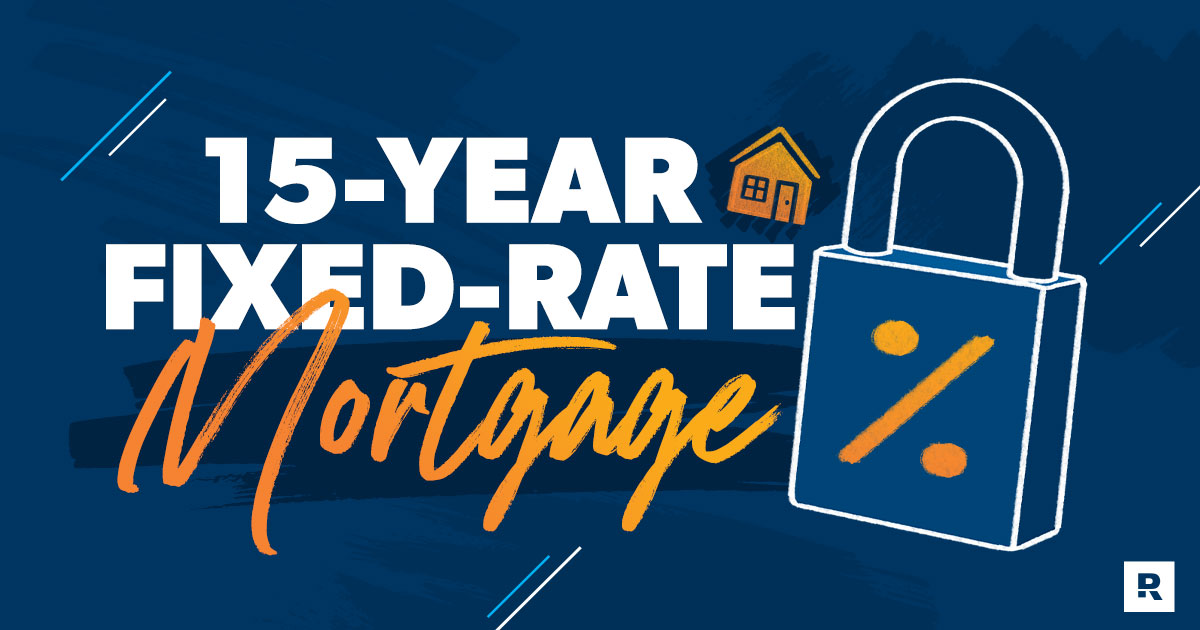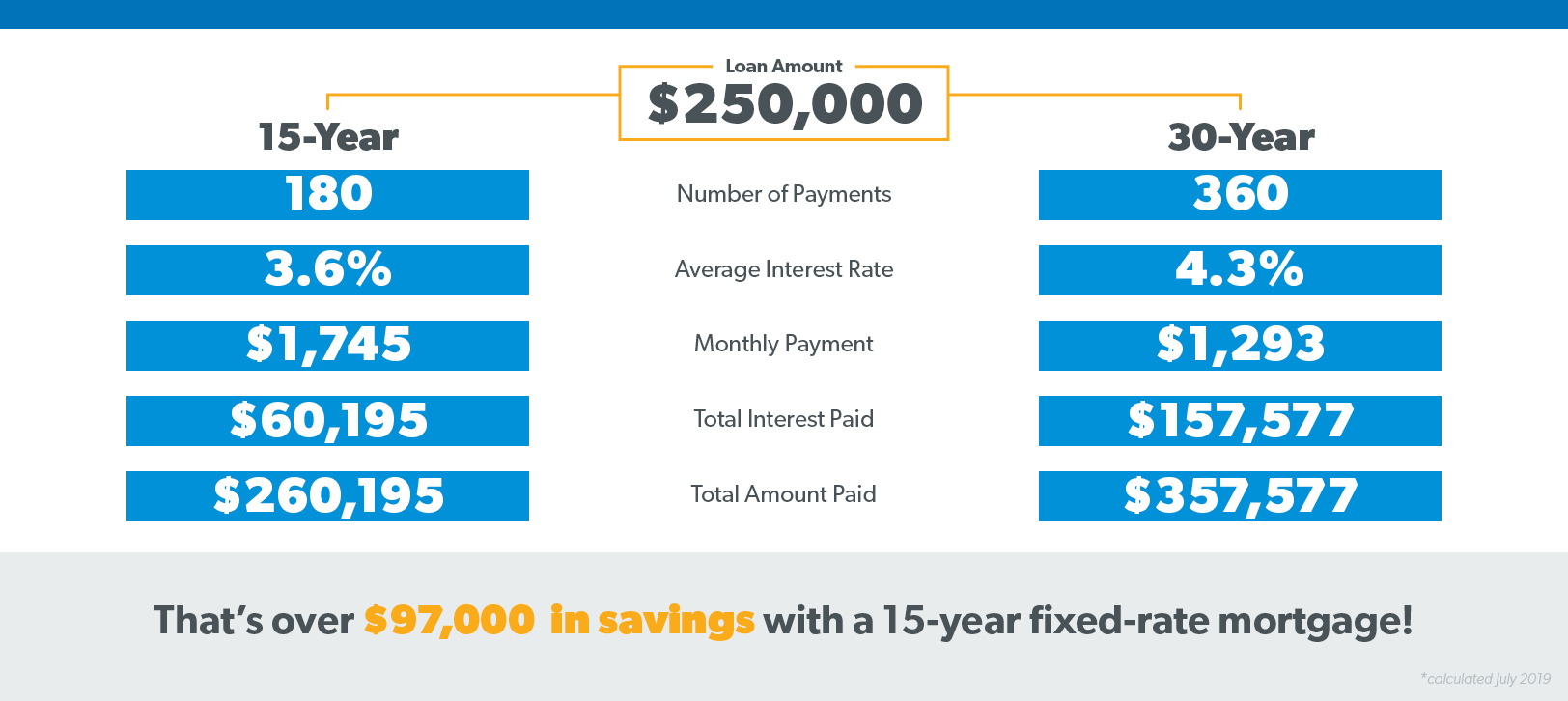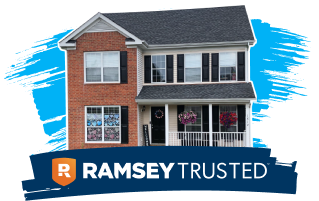What Is a 15-Year Fixed-Rate Mortgage?
9 Min Read | Feb 27, 2025

If you feel a little dazed and confused with all the mortgage options out there, you’re in good company. Trying to make sense of it all is enough to make anyone’s head spin!
As you look at the different ways to finance your new home, the 15-year fixed mortgage might catch your eye. But how does this mortgage option stack up against the competition?
Let’s take a closer look at the 15-year fixed-rate mortgage, how it works, and why it’s one of your best options when it comes to buying a house.
What Is a 15-Year Fixed Mortgage?
A 15-year fixed-rate mortgage is a mortgage loan charging an interest rate that remains the same throughout the 15-year term of the loan.
These loans meet the guidelines and rules set by the Federal National Mortgage Association (FNMA). You might know it better as Fannie Mae, one of the largest investors of conventional loans.
Fixed-rate conventional mortgages are sometimes called "vanilla wafer" mortgage loans. That’s because they’re simple and easy to understand. There’s nothing complicated about them!
How Does a 15-Year Fixed-Rate Mortgage Work?
A 15-year fixed-rate mortgage offers a generic, structured plan for financing a home: You get a mortgage for a set term at a set interest rate, and lenders require a down payment—usually between 5–20%.
The only thing that varies within fixed-rate mortgages is the length of the mortgage term. You can stretch your monthly payments anywhere from 10 to 50 years, but the two most common term options are the 15-year and 30-year fixed-rate mortgages.
There are two basic components to every fixed-rate mortgage loan: the principal and the interest.
- The principal is the amount you borrow to purchase your home.
- The interest is the amount you pay to compensate the lender for taking the risk of lending that money to you.
So, in order to borrow money, you have to spend more money. (Go figure.) But if you opt for a 15-year fixed mortgage, there is a silver lining: You’ll have fewer interest payments!
Get the right mortgage from a trusted lender.
Whether you’re buying or refinancing, you can trust Churchill Mortgage to help you choose the best mortgage with a locked-in rate.
Advantages of Having a 15-Year Fixed Mortgage
The best way to buy a home is with cash. But if you decide to take out a mortgage, we recommend getting a 15-year fixed-rate conventional mortgage with at least 10% down (but 20% is better so you can avoid PMI). Just make sure your monthly payment doesn’t go over 25% of your take-home pay.
So, what is it that makes 15-year fixed mortgages the best option when it comes to financing your house? Here are some of the big advantages:
1. Your interest rate and monthly payment always stay the same.
With a 15-year fixed-rate mortgage loan, you repay the principal and interest each month through your monthly payment.
Since this is a fixed-rate mortgage, the interest rate stays the same throughout the life of the loan. That means your monthly payment (not including taxes and insurance) will remain the same, too.
Dave Ramsey recommends one mortgage company. This one!
This will save you a ton of stress in the long run because you’re protected from the risk of rising interest rates. So, no matter what’s happening in the housing market, if your monthly payment is $1,500 on a 15-year fixed-rate mortgage, you’ll pay that each and every month for 15 years (unless you choose to pay more).
2. They have lower interest rates than most mortgage loans.
On average, 15-year fixed-rate mortgages come with lower rates than just about any other type of mortgage loan. That’s because, with a 15-year loan, there’s less risk for the lender. The longer the term, the higher the risk that the loan won’t be repaid.
With a 15-year mortgage, you can usually get an interest rate between 0.25% to 1% lower than with a 30-year mortgage. That might not seem like much, but the lower interest rate will save you thousands of dollars in the long run. More on that below.
And by choosing a 15-year fixed rate conventional loan, you also won’t get hit with the fees that come with government-backed loans like a VA loan or an FHA loan.
Your Guide to Finding an Affordable Home You Love
Learn our simple, step-by-step process to make closing on the right home for you easier and less stressful.
3. They cost much less than other mortgages.
Many people ask the wrong question when they buy a home: "How much is the monthly payment?" What they really should ask is: "How much is the total cost of the loan?"
It’s true: 15-year fixed-rate mortgages have higher monthly payments than 30-year loans. But when you crunch the numbers and look at the total cost of the loan, the difference between the 15-year and 30-year mortgages is staggering.
Let’s say you plan on borrowing $250,000 for a new home, and you’re trying to decide between a 15-year or 30-year mortgage:
- The monthly payment (principal and interest) for a 15-year fixed-rate mortgage at 3.6% interest is $1,745.
- If you go with a 30-year fixed-rate mortgage with a 4.3% interest rate, the monthly payment comes out to $1,293.
- You’d save $452 each month on monthly payments with the 30-year loan, but that’s just half the equation.
- Choosing the 30-year mortgage because of the lower monthly payment will end up costing you $97,000 more than if you went with a 15-year mortgage!
Why? Because of the total interest you will pay over the life of the loan. You could almost buy a whole separate house with the money you can save by choosing a 15-year loan!
Check out our mortgage calculator to find out how much of your monthly mortgage payment is going to principal and interest.
4. You build home equity faster.
Home equity is just the difference between what your home is worth and how much you owe on it. The more equity you have, the greater the portion of the home’s current value you actually own. One of the main ways you build equity is through paying down the principal of the loan.
In other words, you want more of your monthly payment to go toward the principal—not interest—so you can own more of your home. With the 15-year fixed-rate mortgage, you pay more toward the principal and build equity faster from your very first monthly payment.
But with a 30-year loan, you pay more toward interest annually (and less on the principal) for the first several years of the loan, which means you build equity at a much slower pace.
5. You pay off your home 15 years quicker.
You also might hear that 15-year fixed-rate mortgages are "fully amortizing" loans. That’s just a fancy term to describe the process of paying off debt with a planned, incremental repayment schedule. So, if you make your scheduled monthly payments on your 15-year loan, you’ll pay off your mortgage by the end of the 15-year term.
A 30-year mortgage, on the other hand, will leave you in debt 15 years longer. That’s 15 extra years of your life tied to a bank. Here’s what that might cost you:

If you decide to invest your $1,745 monthly payment into good growth stock mutual funds for the next 15 years after your 15-year term is up, you could add thousands to your retirement fund. That sounds a lot better than 15 more years of mortgage payments!
In case it’s not obvious, we don’t think you should ever get a mortgage term longer than 15 years. You’re basically throwing your money and your time away.
Should I Refinance to a 15-Year Fixed-Rate Mortgage?
Maybe you already bought a house with a 30-year mortgage and you’re thinking this information would’ve been great to have known five years ago.
Or maybe you got stuck with an adjustable-rate mortgage (ARM) or interest-only loan, and you’re sick and tired of riding the roller coaster of rising and falling interest rates.
If that’s you, refinancing your mortgage is definitely an option to consider. It could be a smart move if it lowers your interest rate or shortens your payment schedule.
Before you decide to refinance, there are some things you need to know.
When You Should Refinance
The ultimate goal of a refinance is to make a less-than-desirable mortgage better by locking in a 15-year fixed-rate mortgage with a new payment that’s no more than 25% of your take-home pay.
Refinancing makes the most sense if you fall into one of these categories:
- You have an adjustable-rate mortgage (ARM).
- You have an interest-only loan.
- Your mortgage has more than a 15-year term (such as 30 or 40 years).
- You have a high-interest rate loan.
If you’re stuck in a 30-year mortgage with high interest rates, the gains you make by refinancing to a 15-year fixed-rate mortgage make it a no-brainer.
Yes, it might mean a slightly higher monthly payment. But isn’t it worth it if you can pay off your house years earlier and save thousands of dollars in the process? That’s a win-win!
Just don’t forget to factor in the closing costs of a mortgage refinance, which can cost 2–6% of the loan amount.
When You Shouldn’t Refinance
If you have a favorable interest rate on your 30-year fixed-rate mortgage, going through the expense of refinancing just isn’t worth it.
Instead, use our mortgage payoff calculator to find out what your monthly payment would be on a 15-year term loan and commit to paying that extra amount each month.
The key here is to stay focused and keep making that extra payment. If you stick with it and simply pay on your 30-year mortgage like it’s a 15-year mortgage, you’ll get that balance down to zero faster than you think!
Whether you’re looking to buy a new house or refinance the home you already have, it’s important to have someone in your corner who can walk you through all your options.
Reach out to Churchill Mortgage so their experienced loan specialists can save you the headache of breaking down costs yourself and help you finance your home the smart way.
Did you find this article helpful? Share it!

We Hear You!
We’re considering adding the ability to save articles to your Ramsey account.




